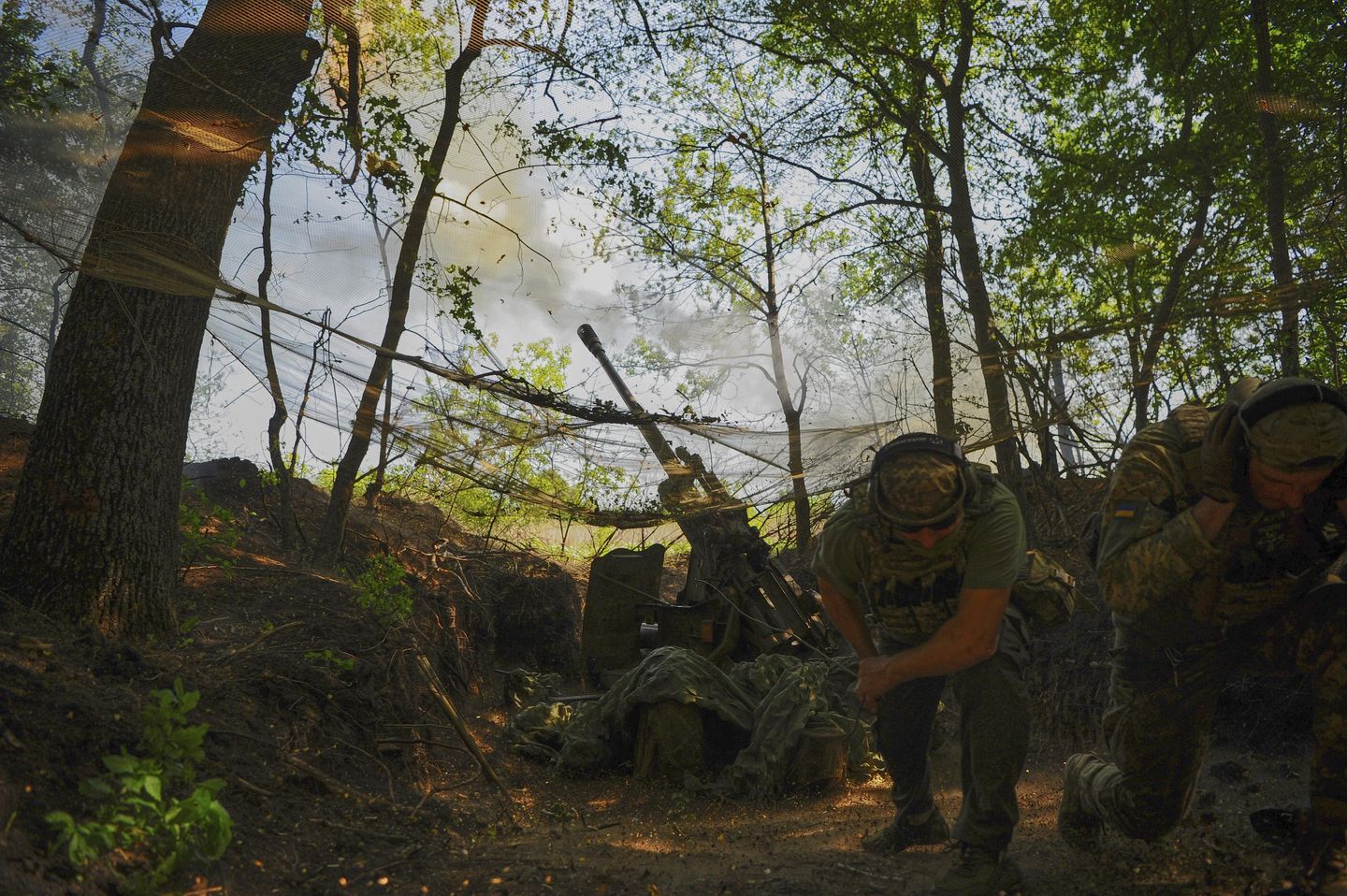
Russia is continuing to grind its way deeper into Ukraine despite setbacks like Ukraine’s underwater strike Tuesday on Russia’s crucial bridge to Crimea and Sunday’s audacious drone attack that destroyed dozens of heavy bombers.
Analysts said Moscow’s forces appear to be ramping up efforts to expand the front line in northern Ukraine’s Sumy Oblast north and northeast of Sumy City. They are likely attempting to advance to within about 9 miles of Sumy City, which would put the region within the range of their artillery, analysts said.
“Russian officials have long called for the establishment of a buffer zone in northern Sumy Oblast and have recently intensified efforts to set informational conditions to justify renewed offensive operations toward Sumy City,” the Institute for the Study of War think tank said this week in its most recent analysis of the battlefield in Ukraine.
The ISW analysts stated that the Kremlin will likely intend to intensify drone and artillery strikes against the city. Russian forces likely aspire to conduct an offensive operation to seize the city; however, they have not seized a Ukrainian city with a prewar population greater than 100,000 since July 2022, the ISW said.
“ISW continues to assess that Russian forces are highly unlikely to be able to seize Sumy City in the near to medium term,” they said.
On Tuesday, Russia’s defense ministry said Ukraine lost at least 700 troops and dozens of armored combat vehicles during the fighting in the Sumy region. They claimed to have “liberated” the town of Andreevka, knocking out at least two Ukrainian airborne assault brigades and a territorial defense brigade.
Ukrainian President Volodymyr Zelenskyy on Tuesday accused Russia of launching a deliberate attack on civilians in Sumy City using rocket artillery. He said at least three deaths have been confirmed, along with “many injured.” He said a Russian rocket failed to explode after it struck an apartment building.
“It is obvious that without pressure, without decisive steps by the United States, Europe, and everyone in the world who has power, Putin will not even agree to a ceasefire,” Mr. Zelenskyy said on his Telegram social media page. “Not a single day does Russia stop striking the cities and villages of Ukraine. Every day we lose our people to Russian terror.”
Ukrainian officials on Tuesday confirmed that their forces struck the heavily defended Kerch Bridge linking Russia to occupied Ukraine for the third time since the fighting began. The underwater mission had been planned for several months and carried out by the Security Service of Ukraine, known as the SBU.
“SBU agents mined the supports of this illegal facility. Today, without any casualties, at 4:44 a.m., the first explosive device activated,” officials in Kyiv said on Telegram afterward. “The underwater supports were severely damaged at the bottom level. The bridge is in a state of emergency.”
The upcoming summer campaign season in Ukraine could be the bloodiest of the entire war as Russia hopes to build on more than a year of gradual advances to finally achieve a breakout on the eastern front. Analysts said Ukraine plans to demonstrate to other countries that they are capable of holding the line against Russia’s war machine.
Russia has sustained about 160,000 casualties in the first four months of 2025, according to an analysis by British defense officials.
“Russia’s strategy continues to rely on costly frontal assaults, but the nature of these assaults is steadily evolving,” according to a recent study by the Atlantic Council think tank. “Russian troops now increasingly employ motorbikes and other improvised vehicles to advance in small groups and infiltrate Ukraine’s defensive lines.”
The Russian ground assaults are supported by drones and artillery, making it difficult for Ukraine to rush reinforcements to critical areas on the front line or provide medical support to their troops.
“The end goal is to force Ukrainian tactical withdrawals and inch further forward,” the Atlantic Council said.
Despite the obvious advantages of a larger pool of potential soldiers and a greater defense industrial capacity, the Kremlin’s forces have not been able to decisively defeat the Ukrainian Armed Forces since the initial invasion in February 2022. Its performance has been hindered by a rigid command and control structure and a reliance on tactics that have contributed to the high casualty rates, according to a recent analysis by the Congressional Research Service.
“The Russian military, however, appears to remain a resilient and capable adversary, and is likely to sustain its operational tempo in the near term,” the CRS said in its report. “
Some observers argue that Russia’s political leadership prizes loyalty of its officer class over their battlefield effectiveness. Several high-ranking military officers, including some who are reported to be highly competent at their duties, have been sacked and even imprisoned for what appears to be insufficient loyalty to Kremlin officials, the CRS said.
“Nevertheless, the Russian military leadership appears to remain a cohesive force. It has gradually consolidated various semi-independent security force units and organizations fighting for Russia and brought them under central command,” according to the CRS report. “The military leadership has proven capable of adopting changes to force structure, operations, and equipment since the 2022 invasion.”
















